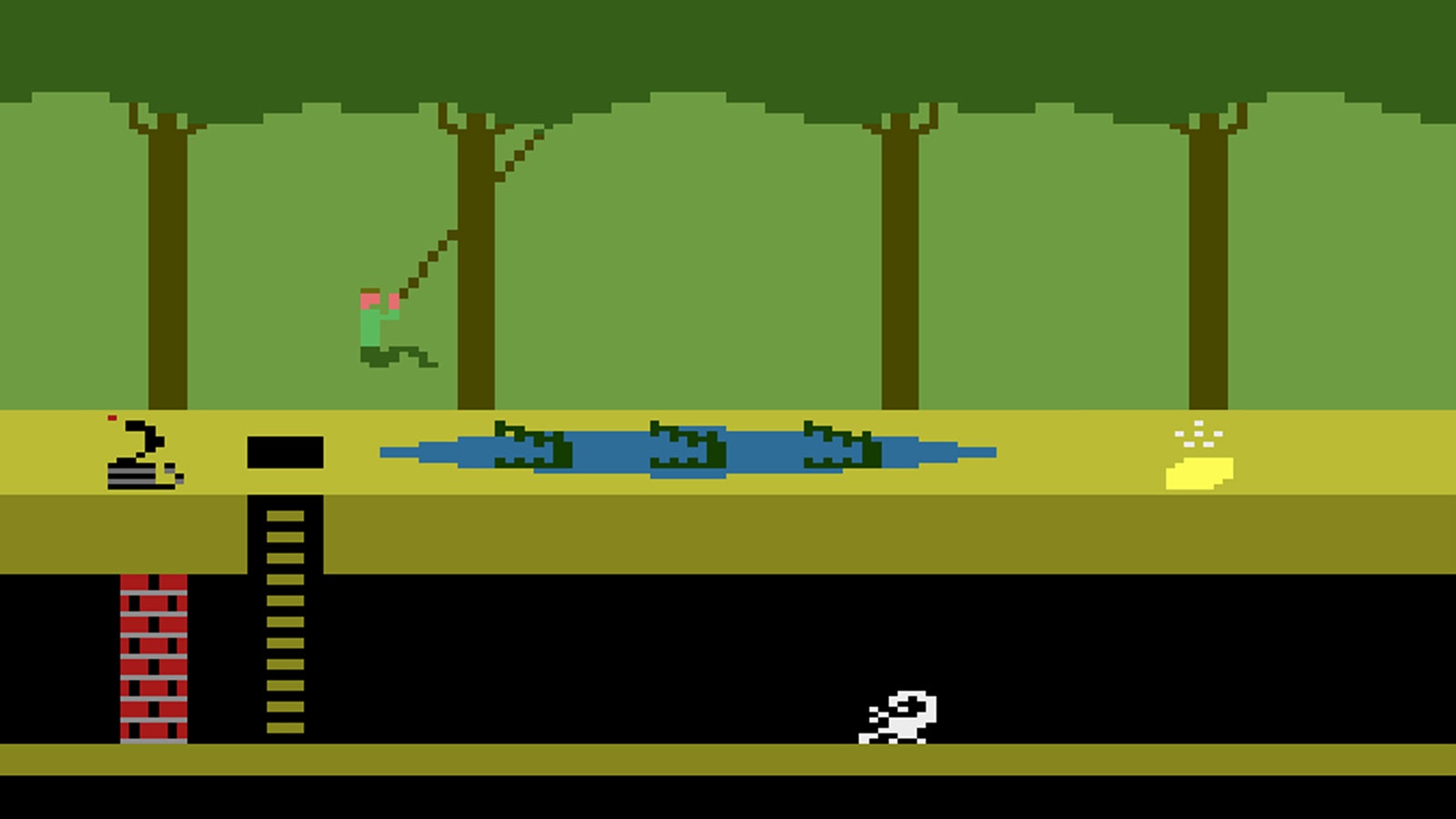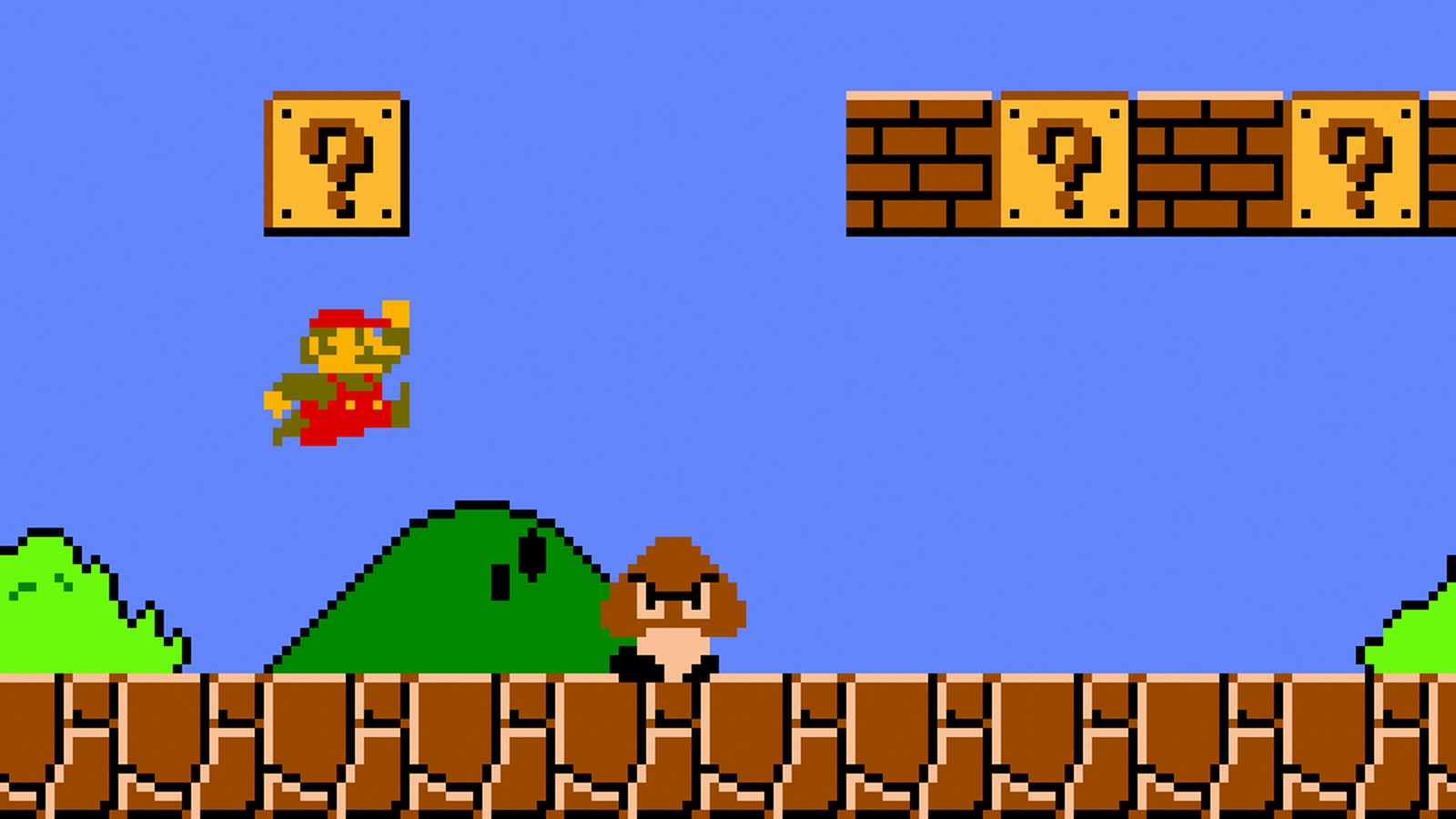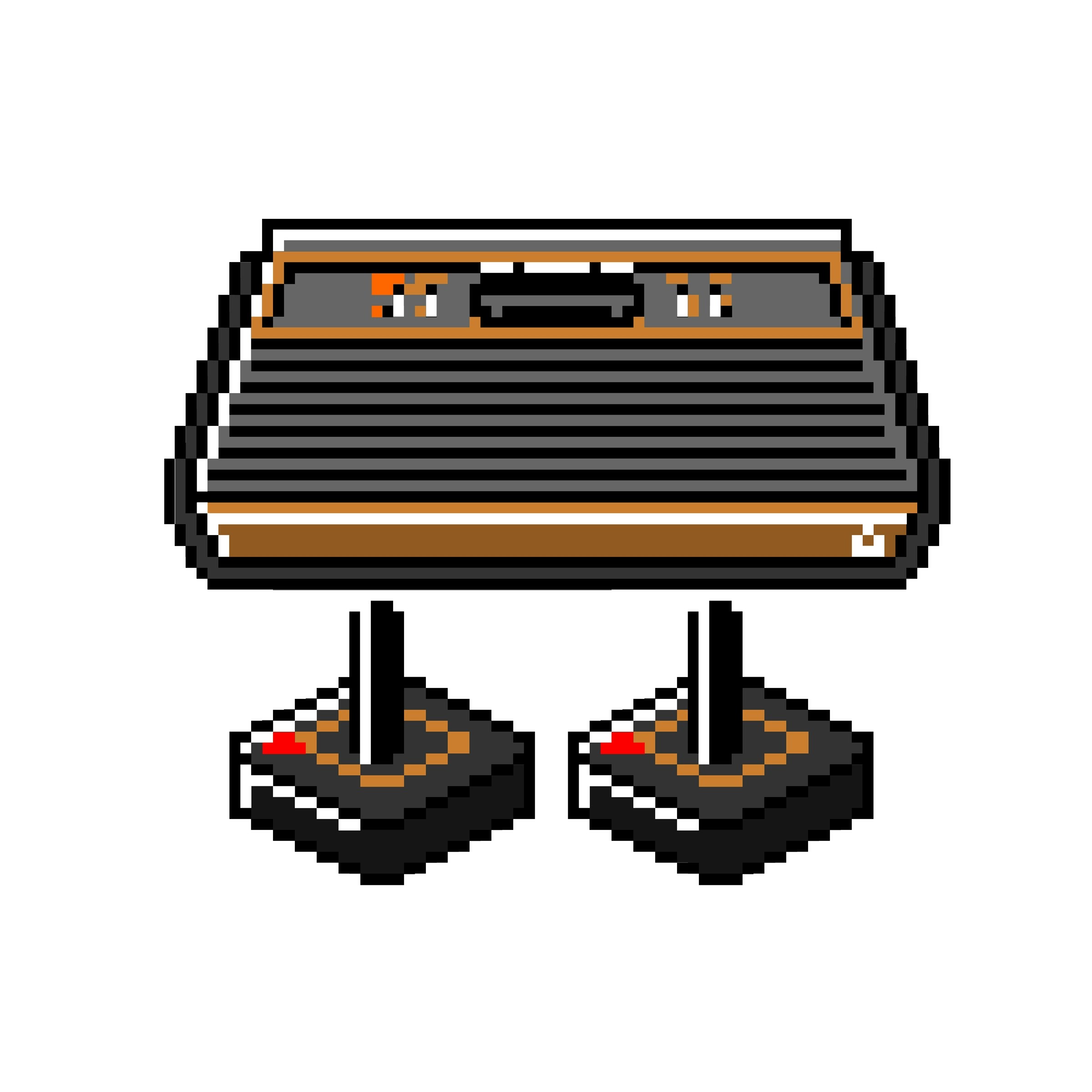
Mario gets credit for popularizing the platformer, but his anti-turtle rampage didn’t invent the genre. The history of platformers stretches all the way back to the early ‘80s with games like Donkey Kong, Space Panic, and Pitfall!, a thrilling adventure set in a jungle that celebrates its 40th anniversary on August 20, 2022. Pitfall! is easily one of the most influential games ever made, and despite being an oft-forgotten gem, it’s probably far more important than anybody remembers.
Pitfall! hit the Atari 2600 in 1982 and became the fourth-best-selling game on the console. Its premise couldn’t be simpler: Keep moving right, pick up treasure, and don’t step on a scorpion. You play as Pitfall Harry, a proto-Nathan Drake with none of the quips yet all the colonialist undertones. Unlike most of its platforming predecessors, Pitfall! didn’t take place on a single screen, instead building its levels out of a series of connected screens.
That might not sound like much, but it made a difference. Side-scrolling platformers emerged around the same time, and these two movement styles made games feel just a bit bigger, more like going on a journey than running an obstacle course. It also enabled the fun and trepidation of seeing a new screen appear and working out how you might avoid its various pits and rolling logs before you reached them.

In some ways, Pitfall! feels more like an endless runner than a modern platformer. Pitfall! isn’t endless — you can finish a game by collecting every treasure across its 255 screens, losing three lives, or letting your 20-minute time limit run out. But the sense that you need to just keep moving forward and avoid hitting anything in your way feels like a clear precursor to games like Temple Run and Canabalt. Pitfall! synthesized arcade-tested ideas like fighting the clock and tracking progress by your score into something so original it doesn’t fit neatly into one genre.
Programming the impossible
While its stylistic influence can’t be overstated, its technical achievements might be even bigger. Created by David Crane (who would later work on Ghostbusters, A Boy on His Blob, and Night Trap), Pitfall! was a laboratory to test a new concept in video games: making a realistically animated human the main character. To achieve that, Crane says he walked around his office, pausing and sketching himself over and over to figure out a plausible run cycle.
According to Crane, it took 10 minutes to come up with the concept for Pitfall! after working out the frames of his animation. All that was left was thousands of hours of programming.
Games of the Atari 2600 era worked under extremely tight hardware constraints. The Atari 2600 redraws each frame of a game line by line starting at the of the screen, which ate up most of the console’s processing power before even running the game.
Crane’s trick to get around the tiny amounts of memory available to him involved using a pseudo-random number generator to spit out a number each time you moved from one screen to the next. The eight-digit number it spit out told the Atari to draw different elements of the game world in a new configuration. Without that trick, it would have been impossible to fit the data for every single screen in the game and still have enough memory to actually make it work.
These technical achievements paid off, making Pitfall! a household name, even if just how monumental of a feat it was is still underappreciated.
“Dad, can you help with the crocodiles?”
I wasn’t thinking about any of those things when I played Pitfall! as a kid. The game came out years before I was even born, but my dad’s hand-me-down Atari 2600 that sat perched beneath my grandma’s TV for more than a decade became my first console in the ‘90s. Pitfall! was one of my favorites, even though I was terrible at it.
Specifically, I was terrible at getting past the crocodiles. Three to a pond, they opened their jaws in rhythm, giving you precious little time to jump across before they clamped shut again. I don’t think I could do it now, to be honest, and it was out of the question for me then. That’s where my dad, who thought gaming peaked with Asteroids and swore off the whole medium before the NES launched, came in.
When I got to one of those insurmountable crocodile pits, I’d summon my dad to help me across before he could get back to whatever more important thing he was doing. Sometimes he’d hold onto the controller for another screen or two, but he never admitted to actually enjoying the game. That tiny exchange, where Pitfall! inadvertently became a co-op game for just a few seconds, seared it into my memory forever.

Of course, none of that is intended. David Crane certainly didn’t program the crocodiles to be kid-proof, and my pathological inability to make that particular jump had nothing to do with programming. But the best games aren’t solely great because of what their programmers intended. Like Pitfall!, they become great through the surprising ways people find to play them and the impact that leaves on the people holding the controls.







